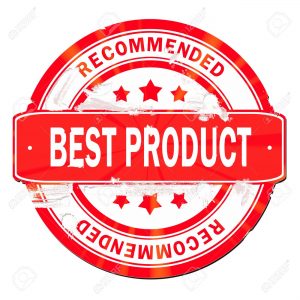What is tyre blooming
Written by: Vinnie van Rooij
Tyre blooming is the discoloration of the rubber in a tyre. This usually shows as brown rubber that is hard to clean off. In general, it won’t get washed off and it might stain towels or applicators. Blooming doesn’t cause immediate damage, but over time it could shorten the lifespan of the tyres by a small amount.
Contents
What is tyre blooming
Tyre blooming is caused by a build of of dirt and contamination that has penetrated the upper layer of the rubber that makes up a tyre. This superficial layer of rubber is fairly open and uneven, causing dirt to stick to the rubber with more ease. Over time, the contaminants can penetrate the upper layer and get stuck deeper within the tyre. The constant movement from a tyre while driving create a rise in temperature, that can actually increase the speed of the build up and spreading of this contamination. The dirt ingrained in the rubber can consist out of several different types, among them are iron particles, dust, dirt, sand, organic material (plants, insects, roadkill) and chemicals (oil, petrol, soot). Over time, the dirt will cause the rubber to turn brown. Because the contaminants are fairly deep in the rubber, they are very difficult to remove. Although it will stain a washmitt or applicator, getting every last particle out of the rubber will proof to be a challenge. Certain manufacturers have been creating special products that are designed to break down the dirt, and make it easier for the particles to be released from the rubber. unless the tyre is kept clean, the blooming effect will return. The use of improper dressing could even make the process faster as dirt and other contaminants could get stuck in the layer of dressing.
How to fix tyre blooming
Certain manufacturers have developed special products that are aimed at removing these particles from the rubber, and make it easier to remove them safely. An example of these type of products is Tuffshine Tyre Cleaner. Although it requires several steps and a fair bit of product, the result will be a much more clean tyre. Once its cleaned the blooming effect can be kept at bay by regular cleaning and a deep clean every few months. Driving conditions can also play a part in this, as highways and dirtroads can contain more unwanted particles then city roads. Also industrial areas can have a higher level of contamination, adding to the level of dirt the tyres pick up. The general view is that the blooming effect is best fixed by deep cleaning with a specifically designed product. Using a wet dressing could cause the blooming to return quicker as the contaminants stick to the dressing.
How to prevent tyre blooming
Although blooming can be corrected it would be easier to prevent it. A good wipe with a wheel-mitt during the weekly wash will clean off a large part of the superficial dirt. A more intensive clean every few months will remove the build up of more stubborn dirt that will not be removed via the wheel-mitt. Avoiding dressings that don’t dry up completely will create a sticky surface over the tyre that contaminants will stick too. Often this will happen with solvent-based dressing, which should be avoided at all times as the solvent can cause cracking in the rubber. Water based dressings based on the use of polymers will usually dry up completely with no negative side-effects to the rubber. Even then, the rubber would require regular cleaning to prevent blooming completely.
Dirty towels or applicators
Tyre blooming can easily be discovered while drying or detailing the car. When a brown tyre gets wet, a part of the contamination will mix with the liquid (being dressing or water). When wiped off with a towel, or when you apply dressing with an applicator, the contamination will be transferred to the towel or the applicator. This will stain the towel or applicator brown or black. Often enough, black shows that the tyre is simply dirty with superficial contaminants and doesn’t require intensive cleaning. This will mostly be soot, sand and perhaps some oils. When it stains brown, the contaminants are likely to include iron and solvent particles. These can be more difficult to remove and could cause the tyre to suffer more from wear and tear. It is adviced to clean the rubber with a proper cleaning product until the rubber doesn’t stain anymore.
If the staining is very light, and hardly visible, it could simply be the rubber itself that causes the staining and a proper cleaning won’t be needed.
 Polishing pads can get very dirty. After use they contain polish residue, oils, very small paint particles, possibly dirt and mineral deposits. Cleaning polish pads properly prepares them for use the next time and prolongs their life....
Polishing pads can get very dirty. After use they contain polish residue, oils, very small paint particles, possibly dirt and mineral deposits. Cleaning polish pads properly prepares them for use the next time and prolongs their life.... It is often asked on detailing fora and social media: "what is the best shampoo". Off course there is a difference between certain products and brands, but it is important to know what you are asking. In this guide I will try to explain what the problem is with this question unless it is asked more in-depth....
It is often asked on detailing fora and social media: "what is the best shampoo". Off course there is a difference between certain products and brands, but it is important to know what you are asking. In this guide I will try to explain what the problem is with this question unless it is asked more in-depth.... Panel wipe is a specific product that is designed to remove polish residue in order to prepare the surface for protection. This often means it has to remove oils and silicones. Most panel wipe are also good glass cleaner....
Panel wipe is a specific product that is designed to remove polish residue in order to prepare the surface for protection. This often means it has to remove oils and silicones. Most panel wipe are also good glass cleaner.... Exhaust tips are one of those I's that need to be dotted. Exhaust tips can be difficult to clean due to type of build up that can be found on the inside or the outside of the tips....
Exhaust tips are one of those I's that need to be dotted. Exhaust tips can be difficult to clean due to type of build up that can be found on the inside or the outside of the tips.... In the field of protective products, the sealant has become a rising star. The demand for an easy to use sealant has grown over the last decade. There is also a rise in quality of the ingredients used with the advancements made in the field of polymer-technology, resulting in better performing products. ...
In the field of protective products, the sealant has become a rising star. The demand for an easy to use sealant has grown over the last decade. There is also a rise in quality of the ingredients used with the advancements made in the field of polymer-technology, resulting in better performing products. ... Within detailing, there are many different types of product. Within the group of cleaning products, there are sub-categories. Amongst them is the wheel cleaner. This is a specific cleaning products designed to clean wheels. This product will be specifically aimed at removing dirt that is most common for this area, such as brake dust, grime, mud, tar and several more. Not all wheel cleaners attack all these contaminants, but most attack many of them....
Within detailing, there are many different types of product. Within the group of cleaning products, there are sub-categories. Amongst them is the wheel cleaner. This is a specific cleaning products designed to clean wheels. This product will be specifically aimed at removing dirt that is most common for this area, such as brake dust, grime, mud, tar and several more. Not all wheel cleaners attack all these contaminants, but most attack many of them....







Links to this article
There are no external links to this article. Yet.